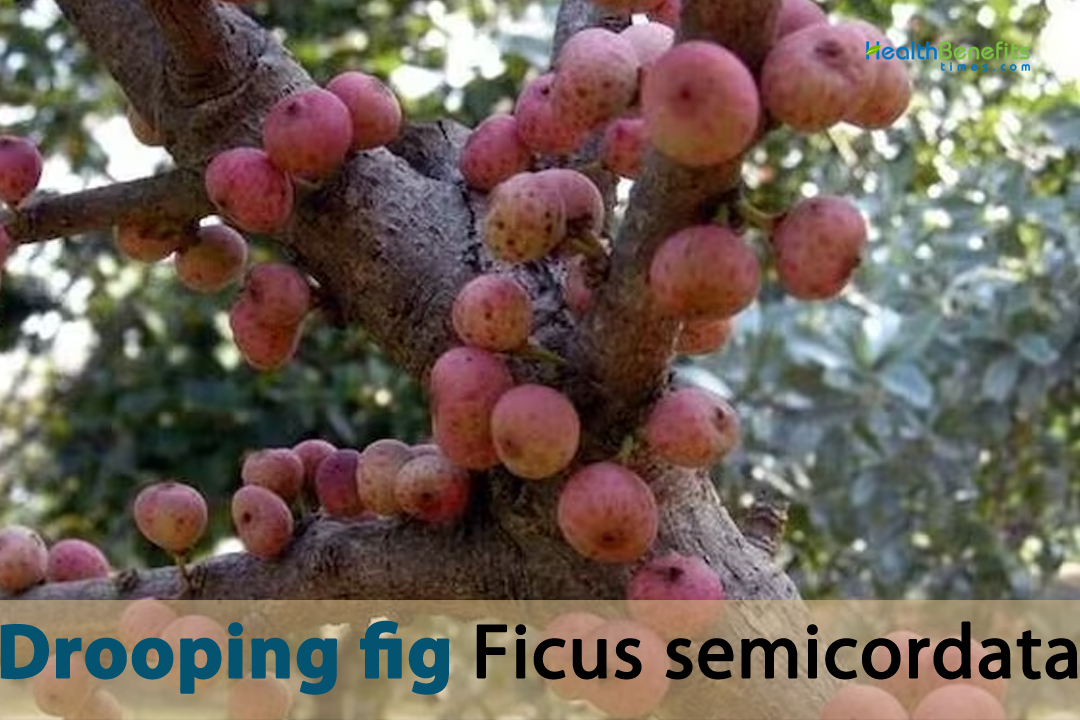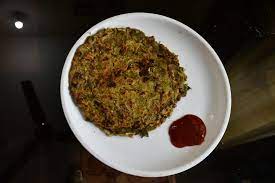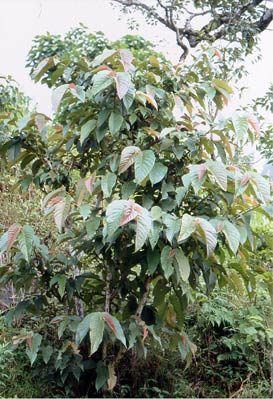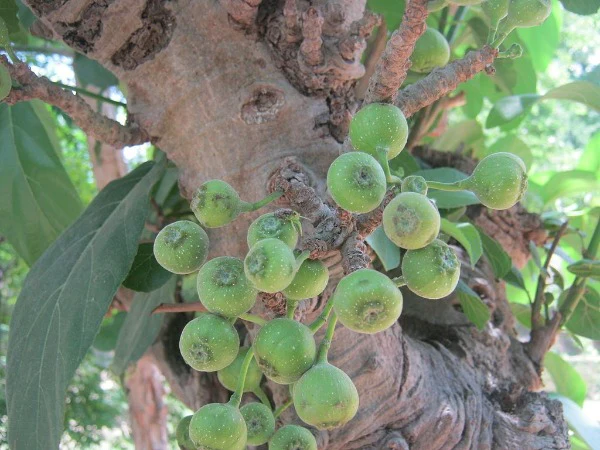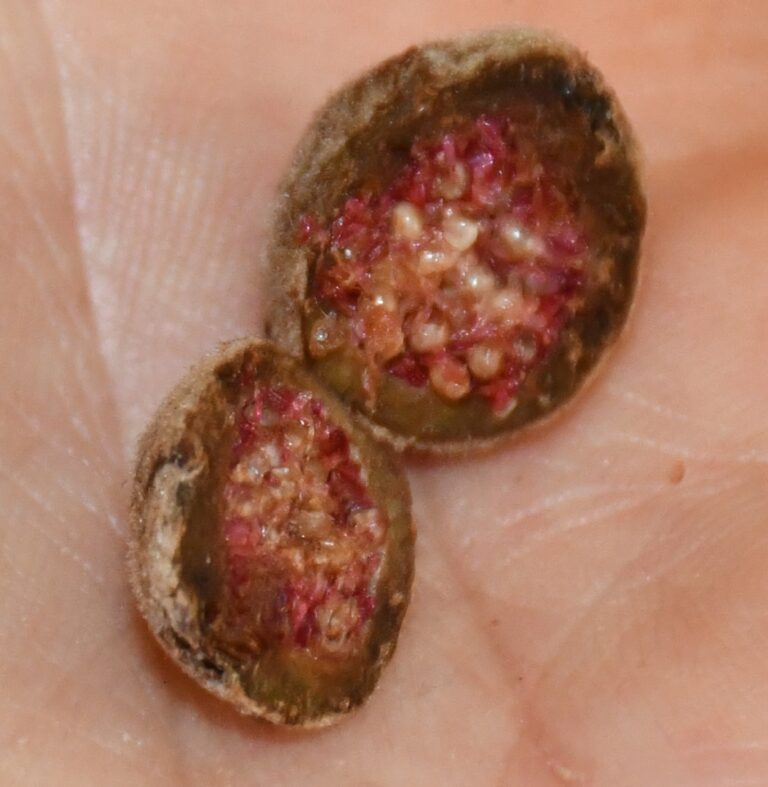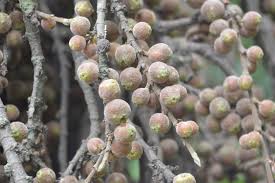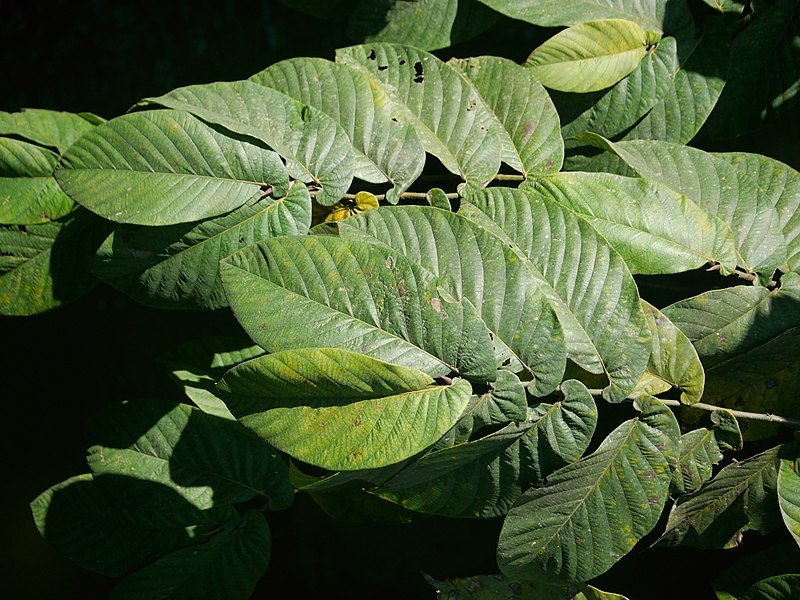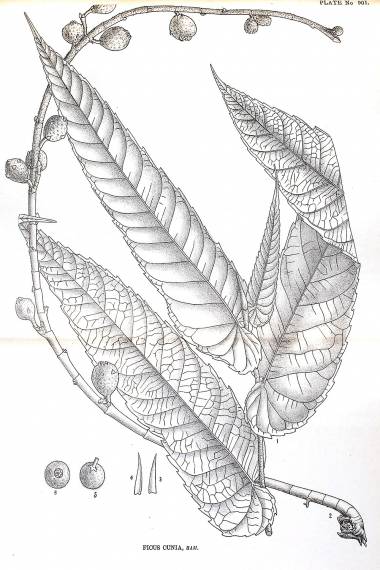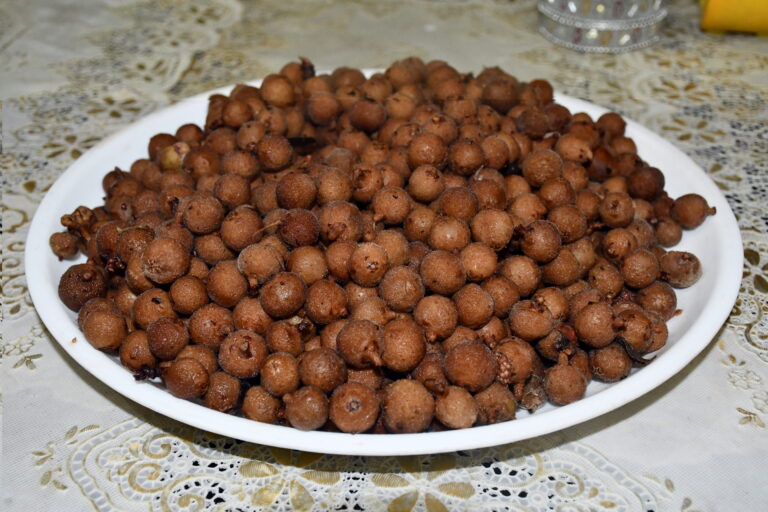This is the genus name for fig, as it is known in Latin. With more than 800 species of trees, shrubs, and vines, many of which are widely recognized as figs, the Ficus genus is very large. The plant is included in this wide and ecologically significant category because of the usage of “Ficus” in its name. The Latin roots of this portion of the name are “semi-,” which means “half,” and “cordata,” which is derived from “cordatus,” which means “heart-shaped.” As a result, the term “semicordata” refers to the semi-heart-shaped or half-heart-shaped leaves. This description helps set this plant apart from other species in the Ficus genus by highlighting one of its unique characteristics. The Hindi term “bhui goolar” comes from the fact that the figs frequently mature underground. Fig leaves are chopped off and eaten. Coarse rope is manufactured from bark fibers.
Drooping Fig Facts
| Drooping fig Quick Facts | |
|---|---|
| Name: | Drooping fig |
| Scientific Name: | Ficus semicordata |
| Origin | Pakistan (Rawalpindi, Kashmir) eastwards to Malaya through India, Bhutan, Sri Lanka, and Myanmar |
| Colors | Green to yellowish to reddish |
| Shapes | Spherical to slightly elongated structure |
| Health benefits | Headaches, fevers, menstrual disorders, constipation, leucorrhea, bladder complaints, liver ailments, jaundice, stomach disorders, wounds, scabies, leprosy, indigestion, liver disease, and skin diseases |
| Name | Drooping fig |
|---|---|
| Scientific Name | Ficus semicordata |
| Native | Pakistan (Rawalpindi, Kashmir) eastwards to Malaya through India, Bhutan, Sri Lanka, and Myanmar. It can be found in tropical regions of Central and South America, including Colombia, Ecuador, and Peru |
| Common Names | Drooping fig, Himalayan fig and Semicordate fig |
| Name in Other Languages | Adi: Takuk Angami: Thotsenuo Assamese: Tokuk asing Bengali: Bainchi Bodo: Taikhro Chinese: Jī sù zi guǒ (鸡嗉子果), Shān pípá guǒ (山枇杷果), Zhēnzhū lián (珍珠莲), Jī sù zi róng (鸡嗉子榕) English: Drooping fig Garo: Amin-sep Hindi: Doomar, paraho (परहो), Khunia, Khaina (खैना), Khunia (खुनिया), Bhui goolar (भूई गूलर), Kandori Kannada: Garagasa (ಗರಗಸ), Ablu (ಅಬ್ಲು), Pajevu (ಪಜೇವು), Palavu (ಪಲವು) Khasi: Dieng-duit-lasas Manipuri: Kongrou, Heirit (ꯍꯩꯔꯤꯠ) Mishing: Takuk esing Mizo: Theipui, Theitit Nepali: Khanyu (खन्यु ), Khaniyo (खनियो), Khanaayo (खनायो) Oriya: Theitis, theitil, theipui, podayi Sanskrit: Chorakapatra, Kakodumbara, Kharapatra Tamil: Taragadi Telugu: Bommachettu, bomma marri, erubodd Thai: Deụ̄̀x pl̂xng h̄in (เดื่อปล้องหิน) Vietnamese: Cọ nọt, Ða lá lệch |
| Plant Growth Habit | Small or medium-sized evergreen tree |
| Growing Climates | Forested areas, evergreen to deciduous forests, forest margins, valleys, along trails, rocky slopes along road, pathways, valleys and banks of ravines |
| Soil | Moist, well-draining soil types that are rich in nutrients. The soil pH should ideally be between 6.0 and 7.2, which supports healthy growth and development of the plant. This species thrives in locations that offer full sun to partial shade, making it adaptable to various lighting conditions |
| Plant Size | Up to 15 meters tall, with a trunk up to 15-25 cm in diameter |
| Bark | Bark is rough dark-grey |
| Leaf | Ovate to lancelote shaped, deeply veined and average between 10-30 cm in length. The leaf vein undersides and stems are reddish in color. This species is not a strangling fig |
| Flower | Has several tiny blossoms inside the syconium. Depending on how they are used in reproduction, they might be male, female, or sterile (gall blossoms) |
| Fruit Shape & Size | Spherical to slightly elongated structure |
| Fruit Color | Green to yellowish to reddish |
| Plant Parts Used | Roots, Bark, Milky sap, Fruits |
| Propagation | By apical stem cutting or through air layering |
Plant Description
The drooping fig is a small to medium-sized evergreen tree with an uneven crown that typically reaches a height of 15 meters. Without aerial roots, the trunk has a girth of up to 15 to 25 cm. The plant can be found growing in valleys, walkways, rocky slopes beside roads, evergreen to deciduous forests, forest margins, and the banks of ravines. Rich in nutrients, the plant thrives in soil types that are moist and drain well. The optimal pH range for the soil is between 6.0 and 7.2, which promotes the plant’s healthy growth and development. This plant is tolerant of many lighting conditions because it grows well in areas with full sun to partial shade. The tree is harvested in its natural habitat for its consumable fruit, fiber, and therapeutic qualities. Along the sides of roadways, it is also grown as a shade tree. The fruits are consumed when they frequently ripen underground (geocarpic). It produces robust fiber and is used as fodder. Juice from the root is claimed to be administered for bladder ailments.
Stem
The plant’s name, “Drooping fig,” comes from its strong, sturdy stem that holds aloft a dense canopy of semi-cordate, or half-heart-shaped, leaves. This fig can reach a size of huge trees in its natural habitat, with a stem that thickens considerably over time. The stem’s smooth, greyish-brown bark has the potential to mature into a rougher, textured appearance.
Leaves
The Drooping fig’s leaves are particularly semi-cordate, which means that one side of the leaf base is usually more rounded than the other and that the leaves are partially but not entirely heart-shaped. The plant is known by its particular name, “semi-cordata,” which refers to its leaves’ half-heart-shaped form. Large leaves that range in length from 10 to 25 cm (about 4 to 10 inches) also contribute to the plant’s attractive appearance with their lush, green canopy.
Flowers
The entire flowering portion of the plant is enclosed within the fleshy, hollow syconium. Although it may appear to be a fruit from the outside, the blossoms are actually inside. The Drooping fig has several tiny blossoms inside the syconium. Depending on how they are used in reproduction, they might be male, female, or sterile (gall blossoms). Once pollinated, the female flowers develop into seeds, while the male blooms yield pollen.
Fruits
The Drooping fig’s syconium is a spherical to slightly elongated structure that, when ripe, can have colors ranging from green to yellowish to reddish. Every syconium is a fleshy, hollow receptacle that contains many small flowers. When fully ripe, the smooth outer skin takes on a velvety texture. Though they might vary in size, the fruits are usually conspicuous on the tree and roughly the size of a small to medium fig.
Traditional uses and benefits of Drooping fig
- Root juice is administered to cure headaches and is suggested for menstruation disorders and fevers.
- It is also given for bladder issues.
- The bark is used to cure peptic ulcers and stomach problems in conjunction with Schima wallichii and Syzygium cumini.
- Constipation is treated with the young fruit.
- To treat headaches, a paste made from the fruit is applied to the forehead.
- Children with fevers are treated with the latex.
- A bath with a mixture of the fruits and bark is used to treat leprosy.
- The plant’s bark is used to cure peptic ulcers and stomach issues.
- The plant’s ripe fruits are consumed to alleviate diarrhea.
- Applying root juice helps alleviate fever.
- Fruit and root juice are used to heal stomach ailments.
- For the treatment of leucorrhea, juice from the plant’s fruits and bark is recommended.
- Liver conditions and symptoms related to the bladder can be treated using the plant’s juice.
- To alleviate headaches, a paste made from the plant’s bark is applied to the forehead.
- Menstrual issues are treated by taking root juice.
- Jaundice, stomach issues, wounds, scabies, leprosy, indigestion, liver illness, and skin conditions can all be treated with leaves.
- Leprosy, ulcers, dysentery, wounds, pregnancy, stomach, liver, and bladder complaints, visceral blockage, baldness, toothaches, diarrhea, boils, and menstrual abnormalities are among the conditions for which stem bark is utilized.
- Locals treat constipation and diarrhea with raw fruits.
- To treat headaches, they utilize fruit or root juice or paste.
- According to the indigenous, plants that produce milky latex can help treat anemia and piles.
- Menstrual problems and fevers are other conditions for which it is advised.
- Leaf decoction is administered orally to treat jaundice together with other plant extracts.
- External use of leaf juice cures scabies.
- Young fruit juice is applied externally to the forehead to ease headaches; raw fruits are consumed to treat diarrhea; leaf decoction taken orally in conjunction with other plant extracts to treat jaundice; leaf juice topically applied to the skin to treat scabies, etc.
Different Uses
- Environmental Conservation: In reforestation and soil conservation initiatives, drooping fig is crucial, particularly in steep and mountainous areas where erosion is an issue. It is a great option for stabilizing soil and recovering degraded areas because of its capacity to grow in difficult terrains.
- Ornamental Use: Large gardens, parks, and public areas might use Drooping figs as beautiful trees because of their striking stature and lovely leaf. It gives landscapes more visual appeal and shade.
- Medicinal Uses: Throughout its natural area, the Drooping fig has been utilized in traditional medicine in various forms, including leaves, bark, and roots. It is said that these pieces contain healing qualities that can aid in the treatment of illnesses like dysentery, diarrhea, and respiratory problems. The plant’s antibacterial and anti-inflammatory extracts have been used for their benefits.
- Fodder: Drooping fig leaves can be fed to animals, especially in areas where there are few options for other types of feed. Because of this, the tree is valuable to rural people whose primary source of income is cattle.
- Timber and Woodwork: Drooping fig wood is used for many things, such as building, furniture making, and making equipment for agriculture. It’s not the best option for high-grade timber, but it’s still a valuable resource for nearby villages.
- Fruit Consumption: The Drooping fig, though not well-known for its fruit, yields tasty fruits that are both edible to humans and devoured by the local fauna. Fruits nourish fauna and are part of the diets of birds and other animals, which helps maintain ecological equilibrium.
- Religious and Cultural Significance: The Drooping fig is significant to many societies’ religious and cultural traditions, much like many other fig species. It is typically planted close to temples and is revered in some cultures as a symbol of protection, fertility, and wealth.
- Living Fences: Drooping fig can be utilized to make living boundary marks or fences in agricultural areas. This environmentally friendly way of defining boundaries and safeguarding crops benefits farmers as well as the environment.
References:
https://www.cabidigitallibrary.org/doi/10.1079/cabicompendium.24179
https://indiabiodiversity.org/species/show/229751
https://en.wikipedia.org/wiki/Ficus_semicordata
https://www.flowersofindia.net/catalog/slides/Drooping%20Fig.html
https://www.phytomednepal.com/plant/ficus-semicordata-buch-ham-ex-sm
https://tropical.theferns.info/viewtropical.php?id=Ficus+semicordata
http://www.efloras.org/florataxon.aspx?flora_id=5&taxon_id=200006371


